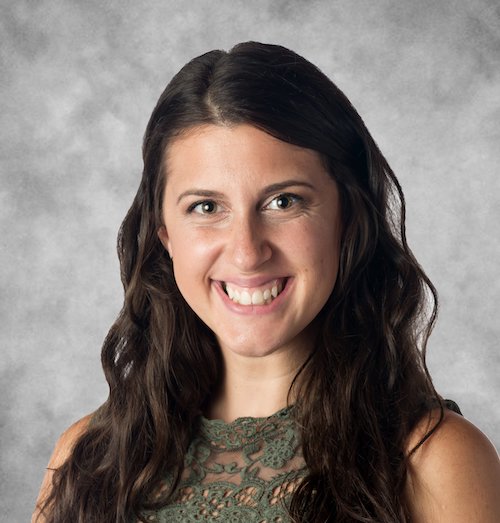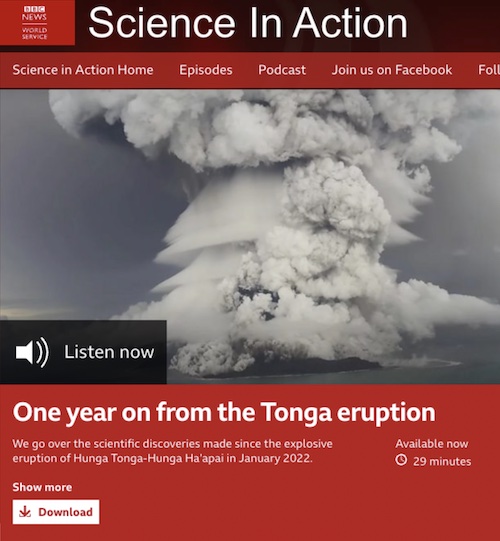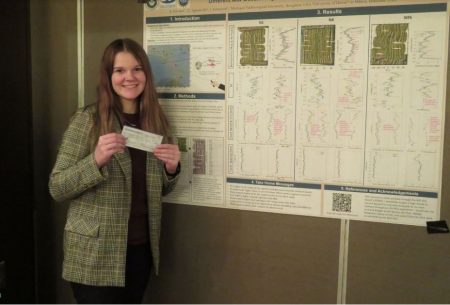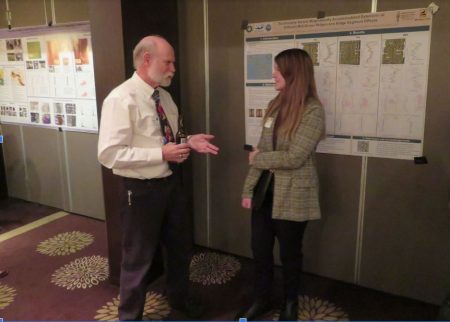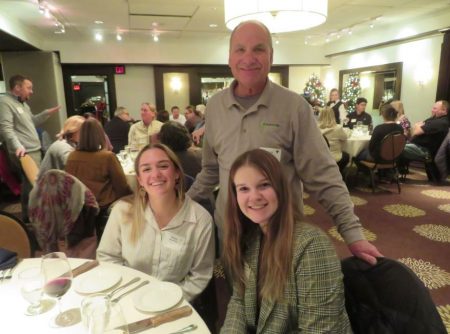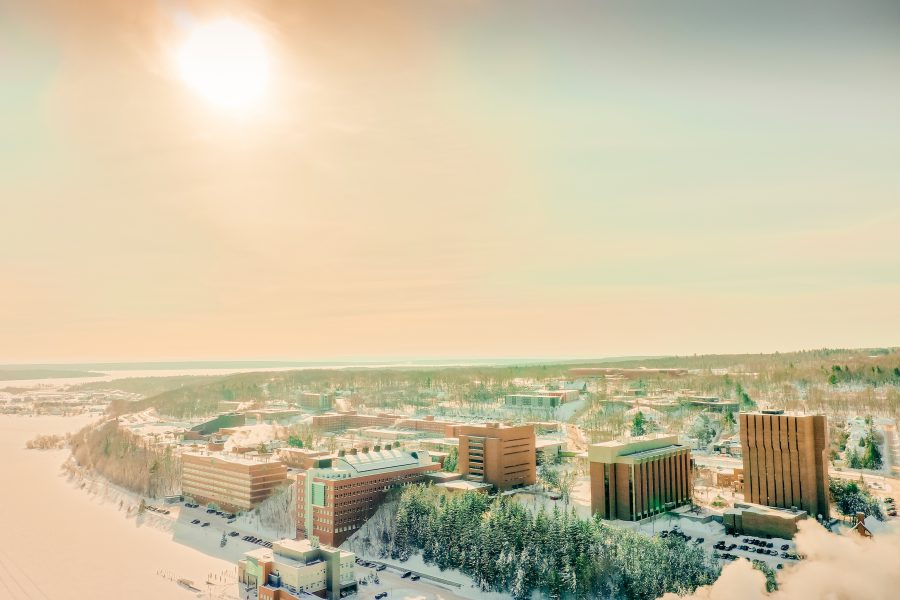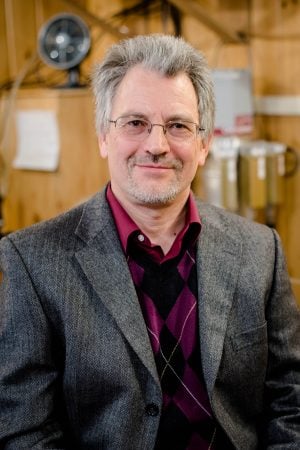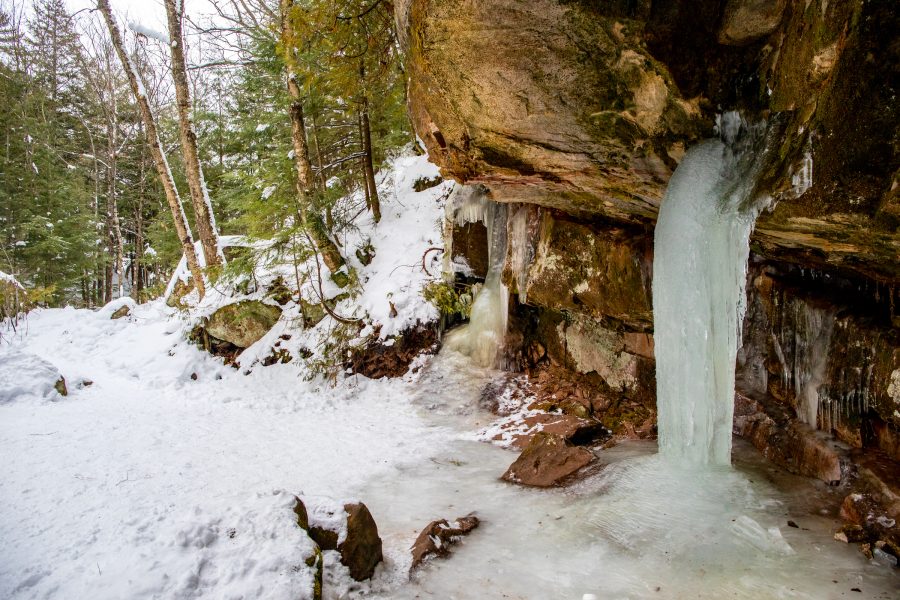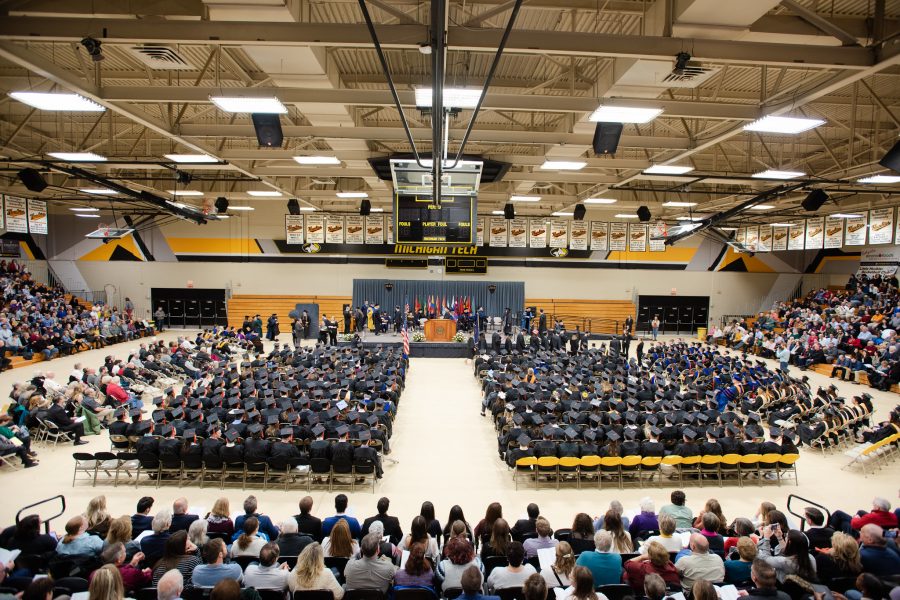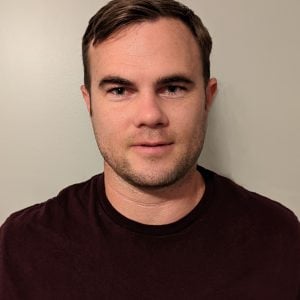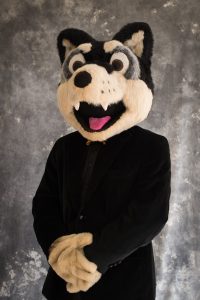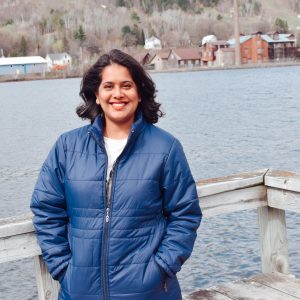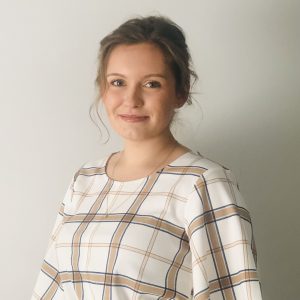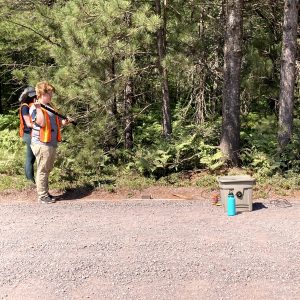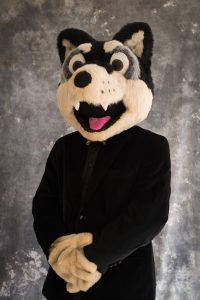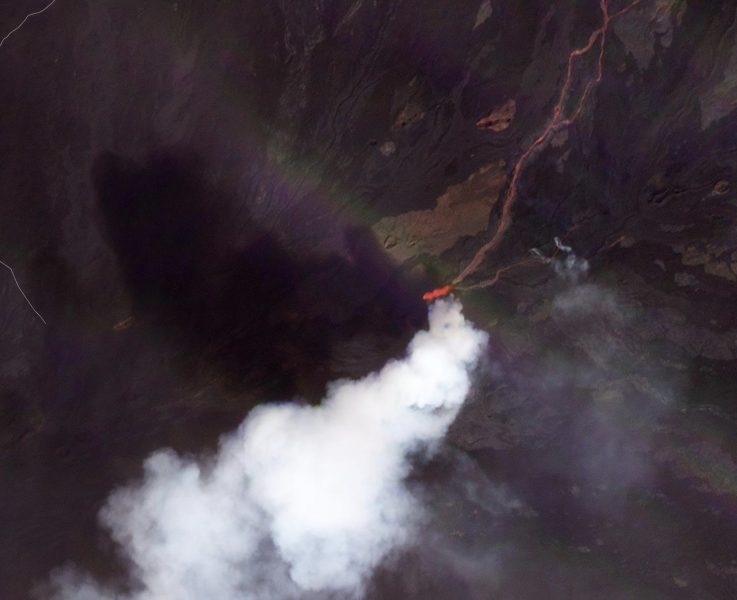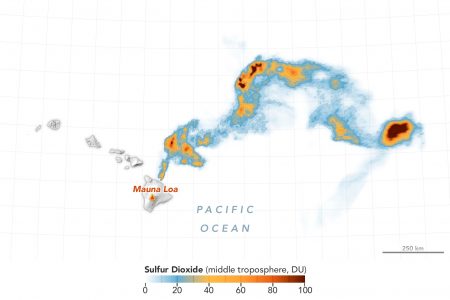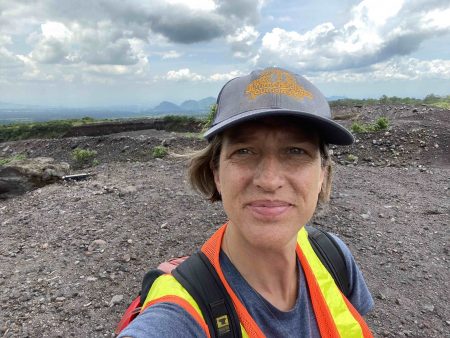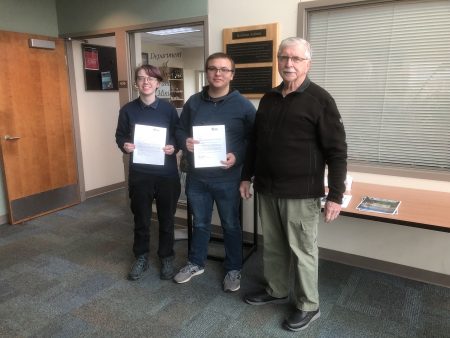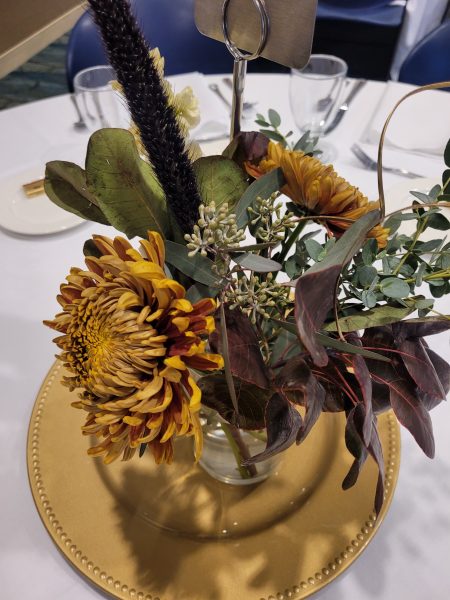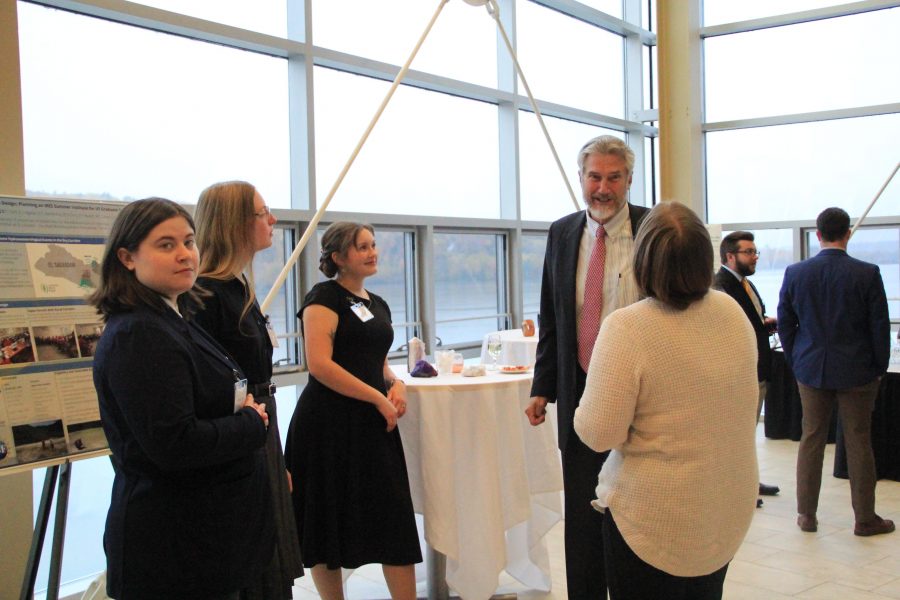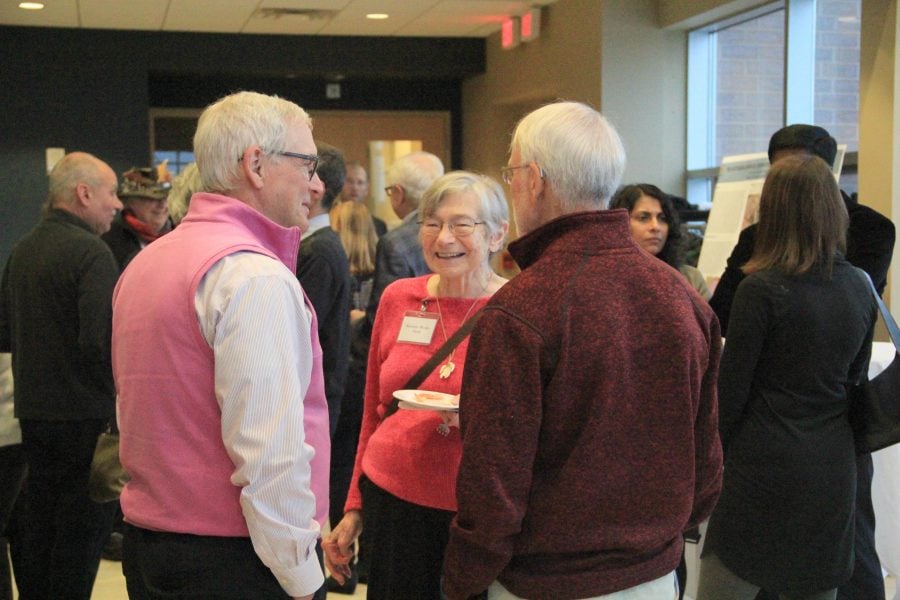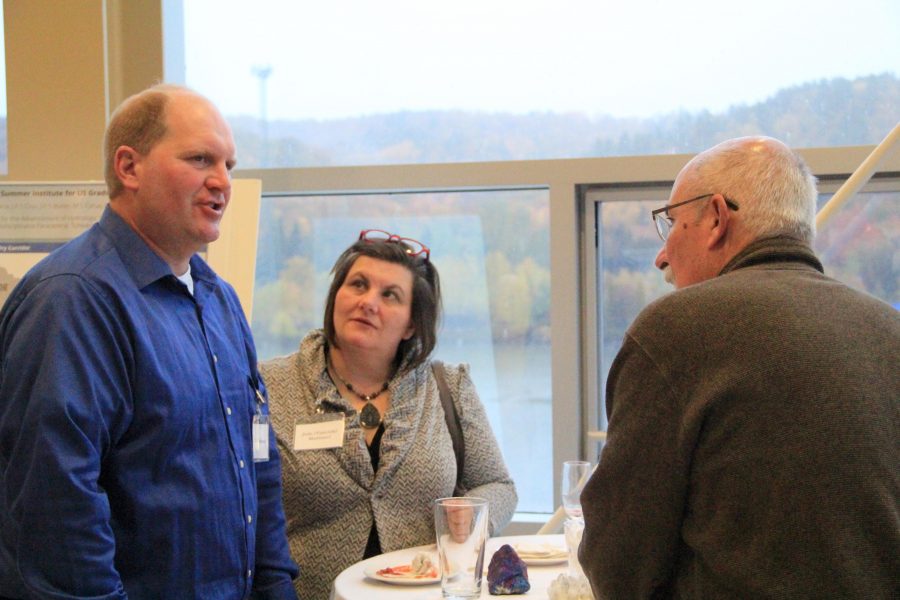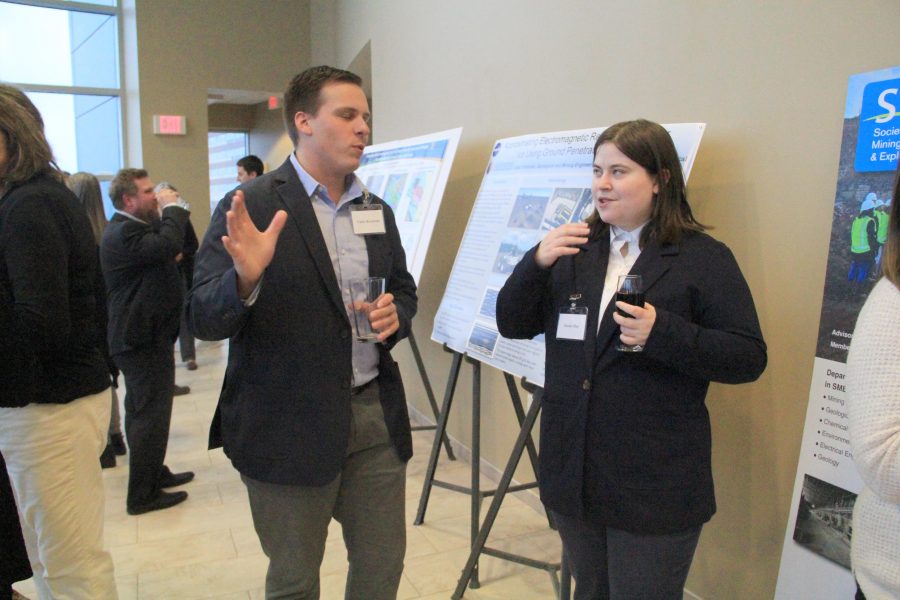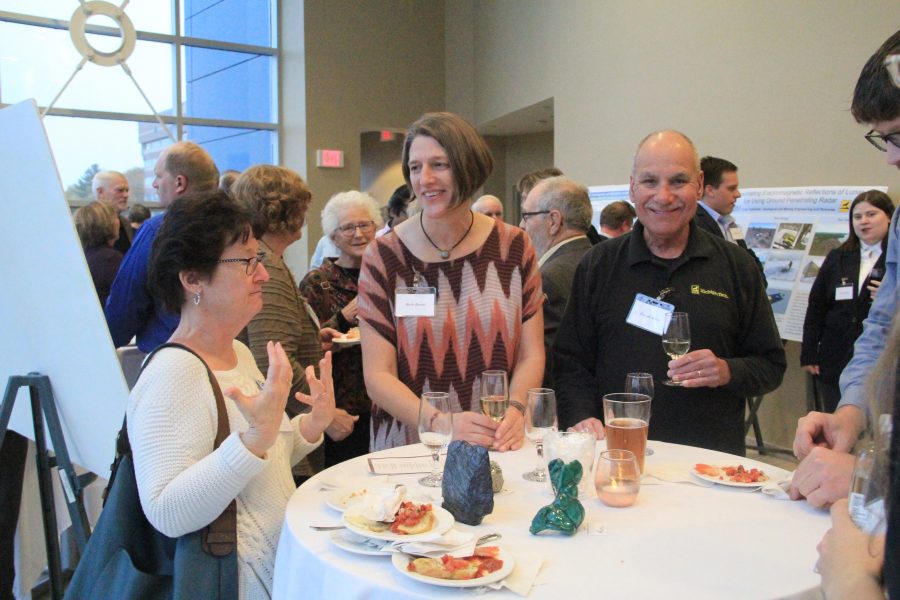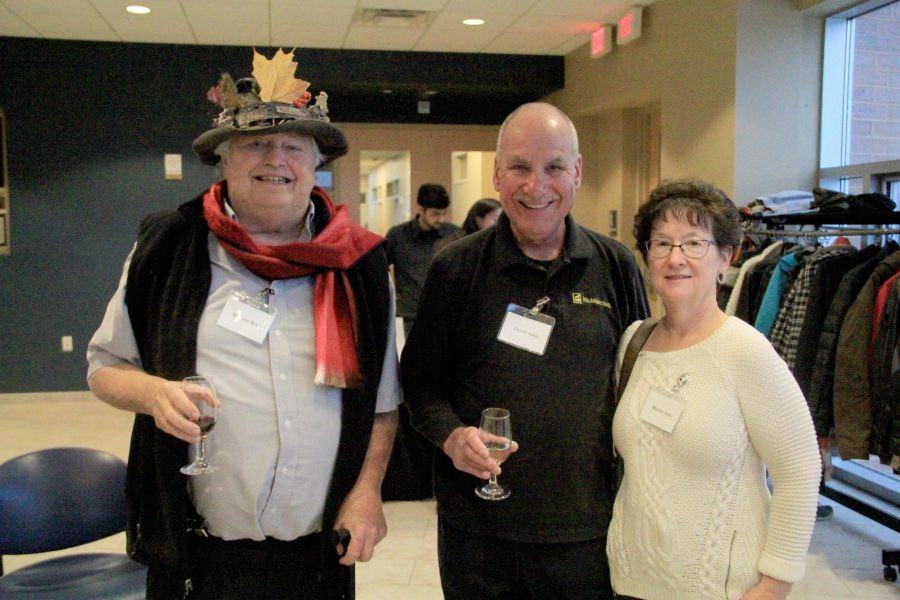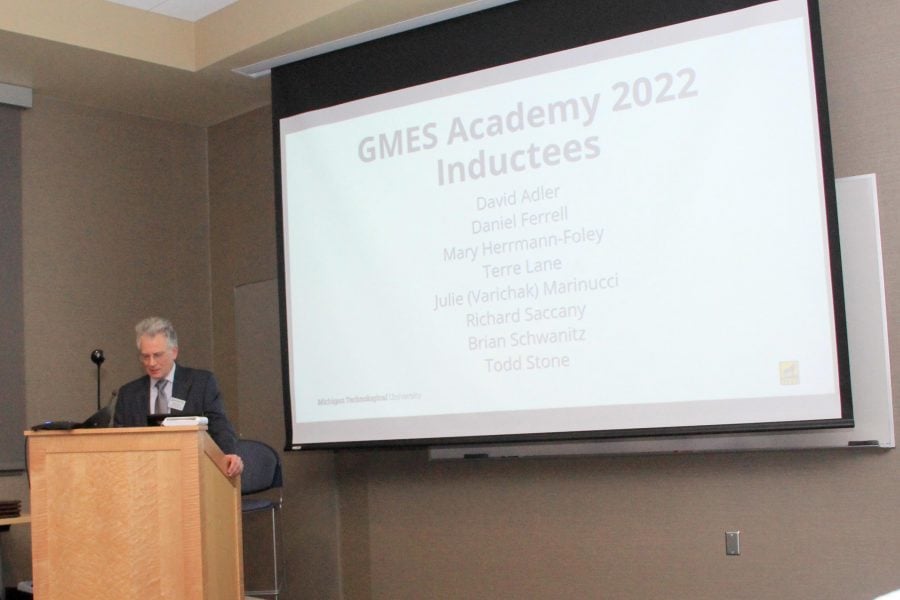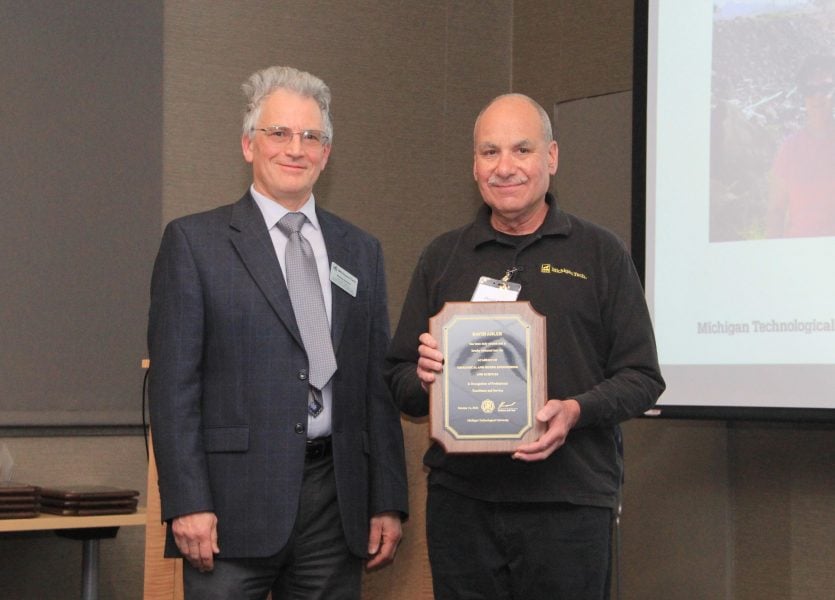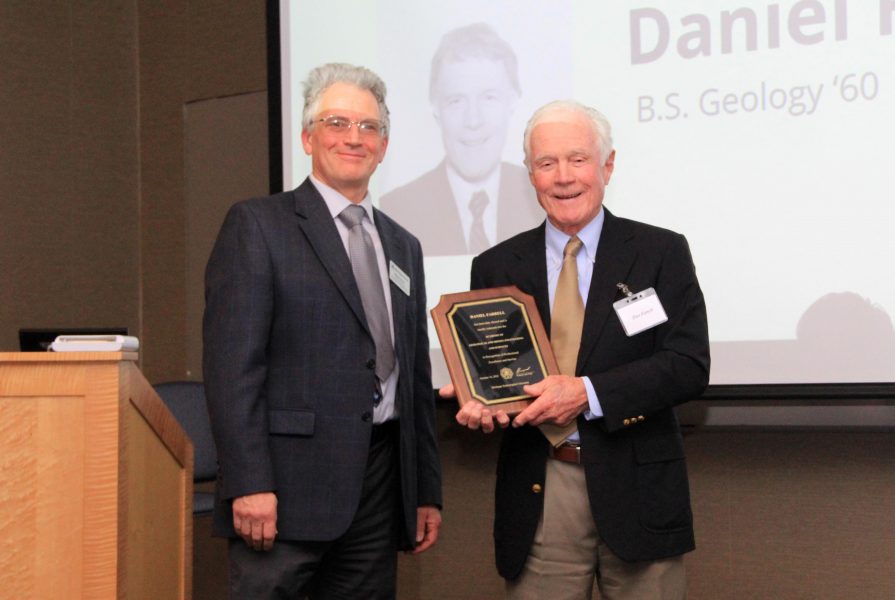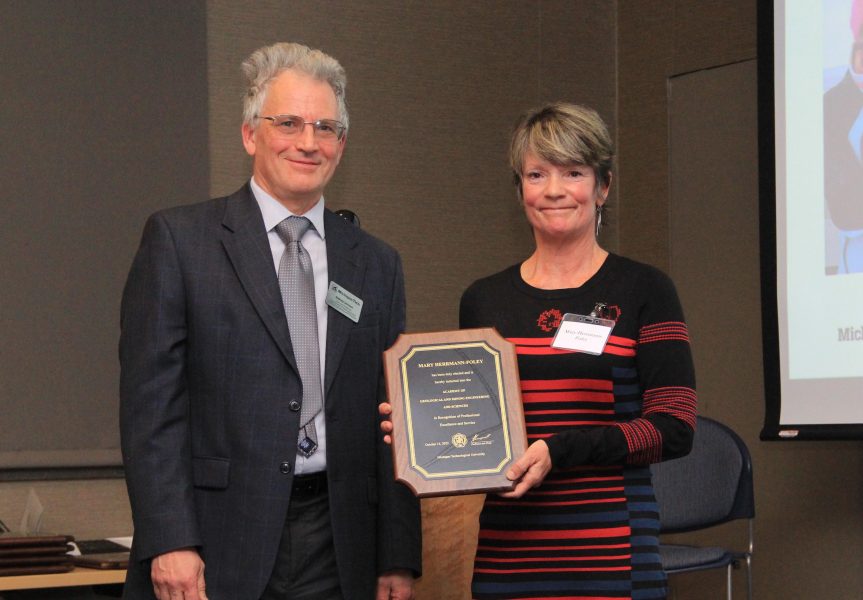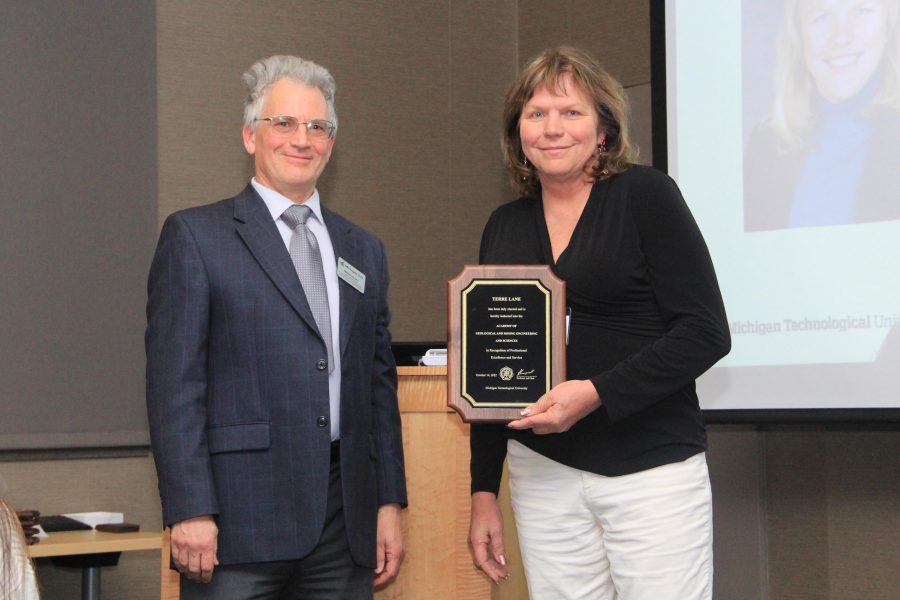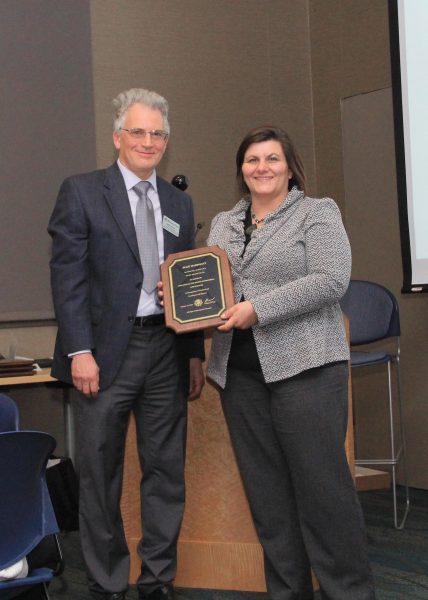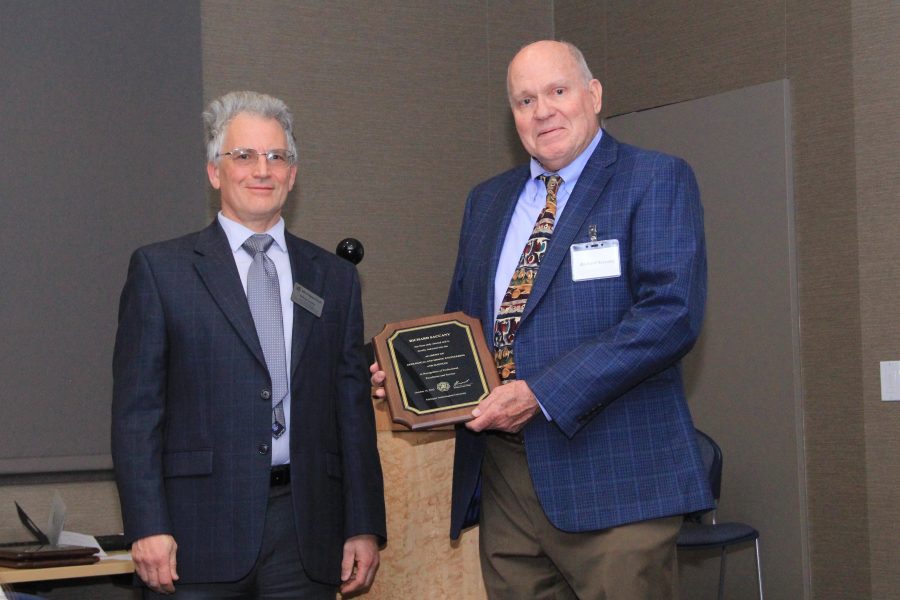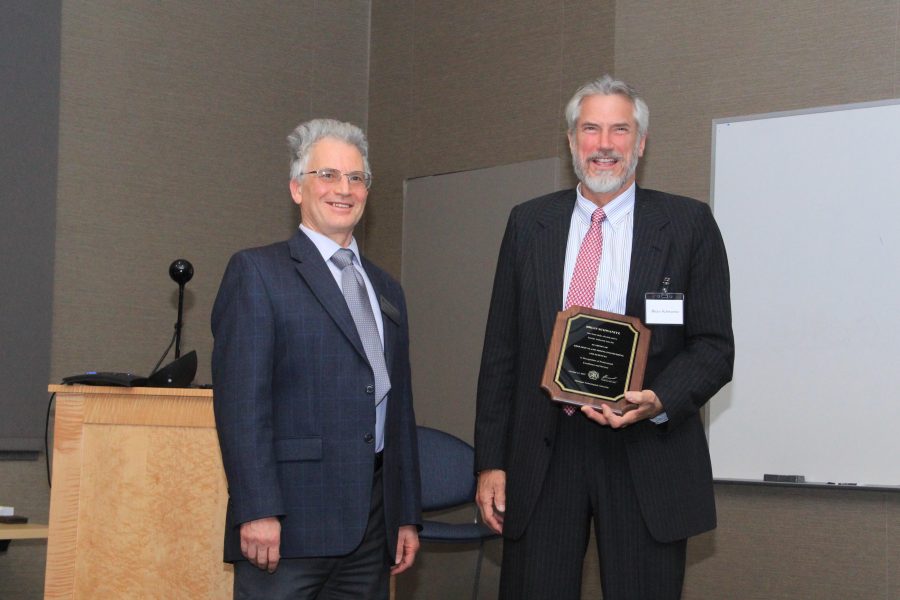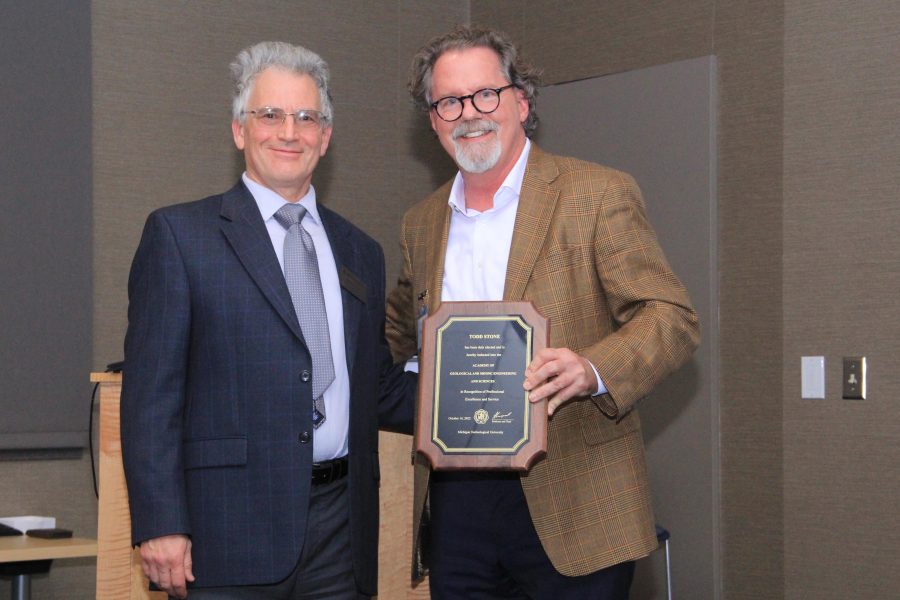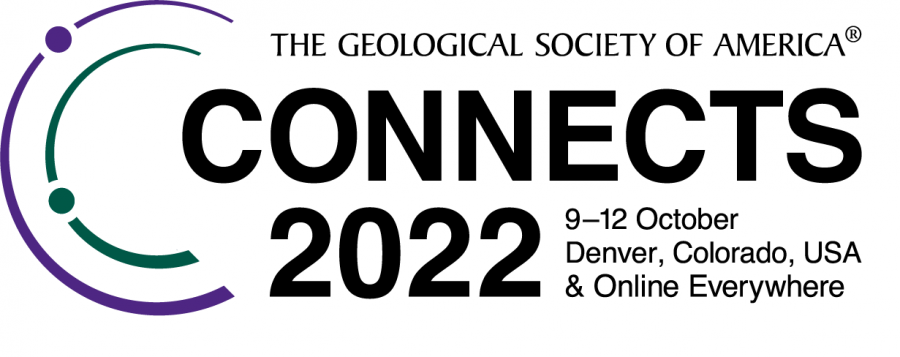Our heartfelt congratulations to Brittany Buschell, the GMES department coordinator, on receiving the 2022 Above and Beyond Making a Difference Award!
Brittany, who joined GMES in 2014, goes above and beyond her duties as coordinator. She is incredibly creative and very skilled in artistic endeavors. She quietly applies these skills to her work in GMES as the unofficial department photographer and as a media creator. Any time that a picture of someone is needed, Brittany is there with her camera and the perfect flash for the event time and place. The pictures that are presented always look great—many of the faculty photos on our faculty webpage were taken by her!
With her love of rocks, Brittany fits right in at the geological and mining department. Several times each year she organizes Yooperlite hunting trips with our students. She grabs a bucket, her UV flashlight, and groups of brave students to walk the shores of Lake Superior at night collecting the Yooperlites. She even puts together gift bags to give out to donors, visitors, or prospective students. Each bag contains a Yooperlite and a card (that she designed of course) explaining Yooperlites. It can take a few hours to collect just a couple of Yooperlites, so you can imagine the time Brittany spends looking for these during the months without snow!
Brittany constantly goes above and beyond to create a comfortable, safe, enriching environment for our faculty, staff, and most importantly, our students. The GMES community is thankful for the positive difference she makes, and we congratulate her on this well-deserved recognition!
